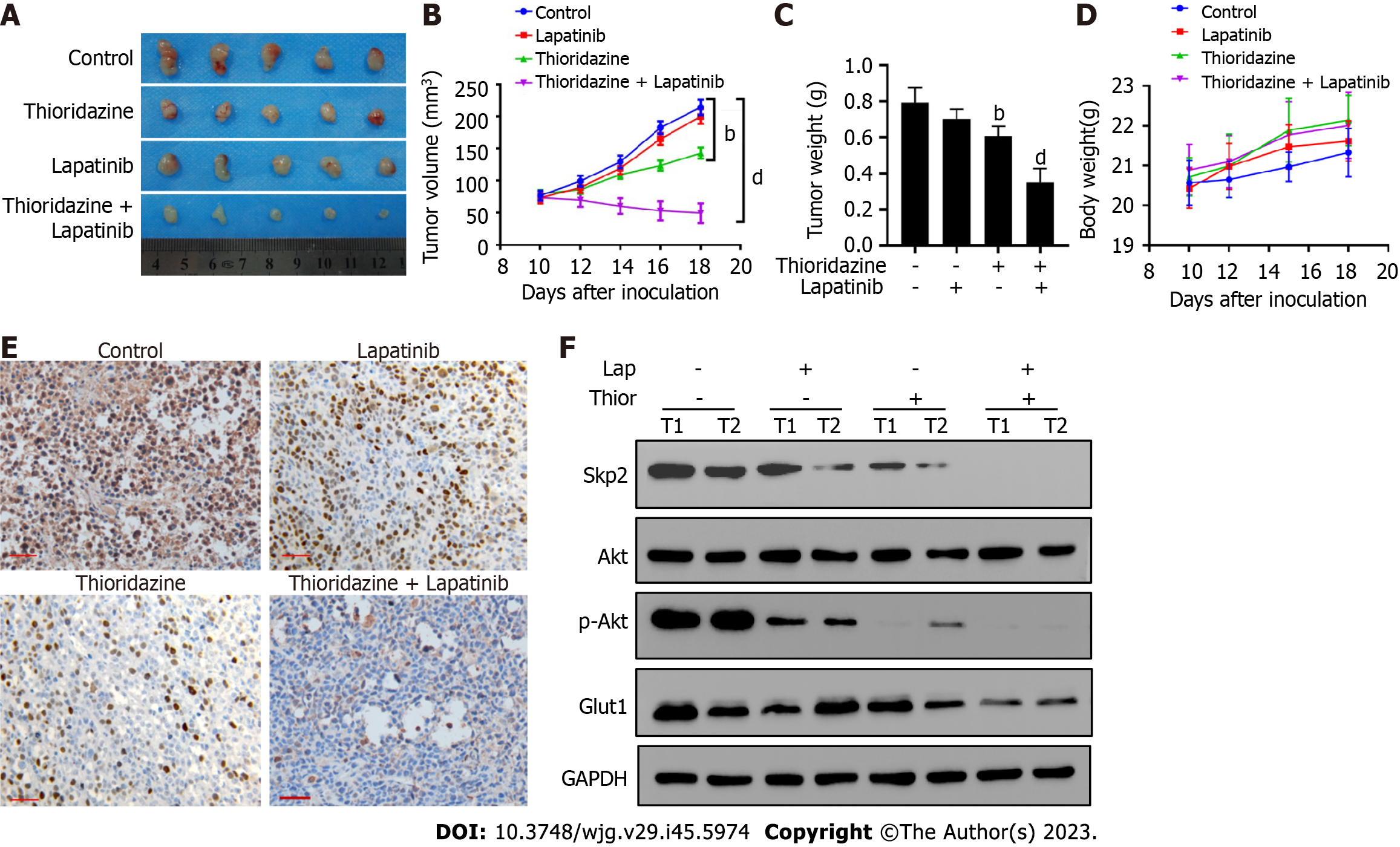Copyright
©The Author(s) 2023.
World J Gastroenterol. Dec 7, 2023; 29(45): 5974-5987
Published online Dec 7, 2023. doi: 10.3748/wjg.v29.i45.5974
Published online Dec 7, 2023. doi: 10.3748/wjg.v29.i45.5974
Figure 6 Coadministration of thioridazine and lapatinib demonstrates potent anticancer activity in mice harboring gastric cancer xenografts.
A: SGC7901-R cells (1 × 106) were injected s.c. into the flanks of nude mice. Ten days post-implantation, the mice were randomized into four groups of five mice each. Then, the mice were treated by i.p. injection with phosphate-buffered saline, lapatinib (70 mg/kg), thioridazine (25 mg/kg), or lapatinib (70 mg/kg) plus thioridazine (25 mg/kg) for 14 d. Gross morphology of the final excised xenograft tumor masses; B: Tumor volumes following treatments were recorded; C: Wet tumor weights; D: Body weights of mice; E: S-phase kinase associated protein 2 (Skp2) expression was evaluated by immunohistochemistry in primary tumors (scale bar = 100 μm); F: The protein levels of Skp2, protein kinase B (Akt), p-Akt, glucose transporter type 1, and GAPDH in two primary tumors from each group were measured by western blotting. bP < 0.01, dP < 0.0001. Thior: Thioridazine; Lap: Lapatinib.
- Citation: Yang ZY, Zhao YW, Xue JR, Guo R, Zhao Z, Liu HD, Ren ZG, Shi M. Thioridazine reverses trastuzumab resistance in gastric cancer by inhibiting S-phase kinase associated protein 2-mediated aerobic glycolysis. World J Gastroenterol 2023; 29(45): 5974-5987
- URL: https://www.wjgnet.com/1007-9327/full/v29/i45/5974.htm
- DOI: https://dx.doi.org/10.3748/wjg.v29.i45.5974









